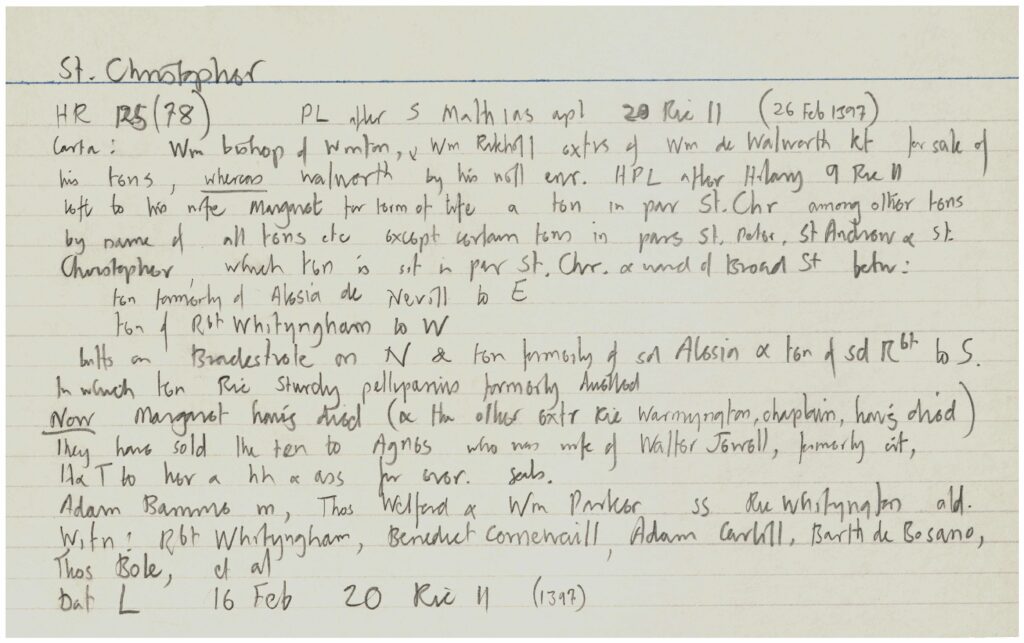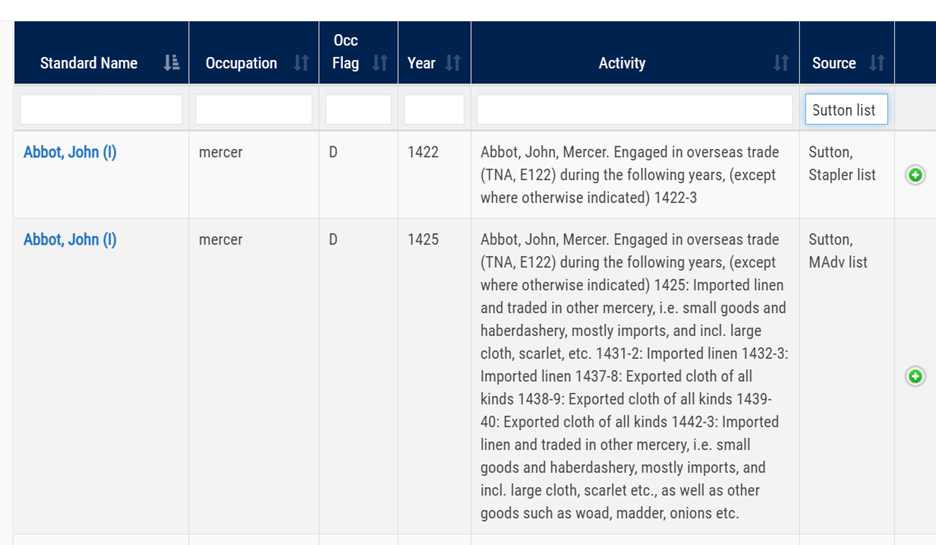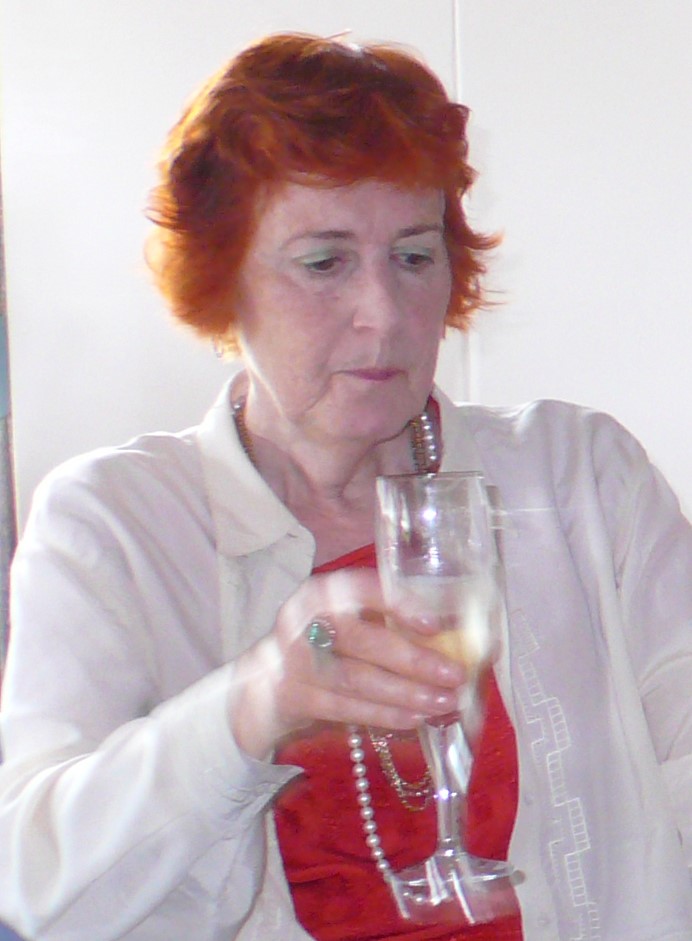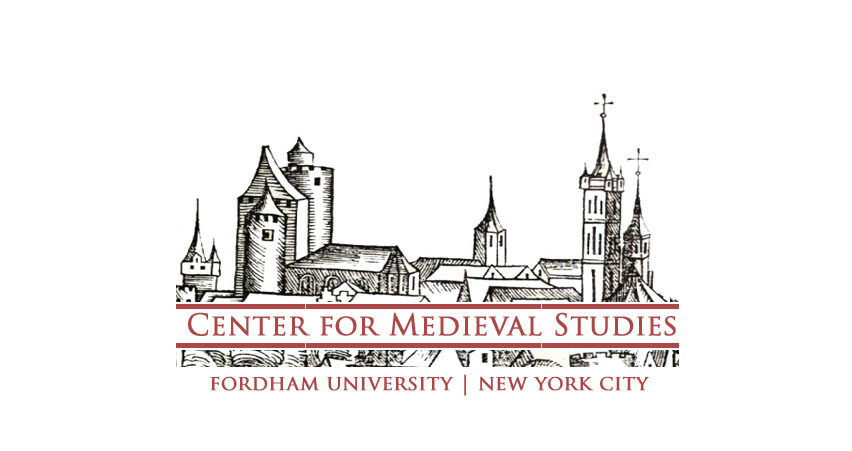Welcome to the Medieval Londoners Blog. Please subscribe to receive updates on new material added to the Medieval Londoners Project and other items of interest to those working on medieval London. Since the last post, MLD has added 114 records about London nuns (mostly prioresses) and c. 1150 records of Mercers who were Staplers or Merchant Adventurers. For other forthcoming datasets, see What’s New in MLD?
Nuns and Prioresses

MLD recently added a dataset of London nuns compiled by Olivia Geraci (with contributions by Morgan McMinn); most of these records relate to prioresses in four female religious houses: St Mary Clerkenwell, Holywell (Haliwell), St Helen’s Bishopsgate, and the Minoresses without Aldgate. The references to prioresses were taken primarily from listings in the three volumes of The Heads of Religious Houses: England and Wales, edited by David M. Smith and others (Cambridge, 2001-2008). But the Calendars of Letter Books also provided some interesting references to London nuns. In 1363, for example, the executor of the Tailor Robert Westmelne was summoned to the Guildhall to answer for money bequeathed by Robert to his three under-age sons and his two daughters; Margaret married a Mercer, and Isabella, a minor, was a nun at Holywell priory, an Augustinian house in Shoreditch, outside the city walls. In rendering his account, the executor, John Madefrey, a Pepperer, noted that he had paid to Dame Elena, the Prioress of Holywell [Ellen Gossham], the sum of £46 13s. 4d, £40 of which was bequeathed to Isabella by her father, plus 10 marks that she inherited on the death of one of her brothers. But there was a condition attached to this bequest: if at the age of 14 Isabella wanted to leave the convent, all this money should be returned to her, minus the cost of her expenses while residing at Holywell. If she died before reaching 14, then one-half of the money was to be returned and expended for the good of her father’s soul, and the other half was to be distributed to the remaining children of Robert. Since medieval nuns were cloistered, the extant records for nuns below the rank of prioress are very scarce, so we do not know if Isabella stayed in the convent or left, but this entry does provide insight into how young girls of the merchant class could be when they entered the convent.
The Get to Know Medieval Londoners Project
Please check out a new Medieval Londoners digital project called Get to Know Medieval Londoners, which uses a crowdsourcing platform called Zooniverse to bridge the gap between the academy and popular enthusiasm for the middle ages while simultaneously advancing the study of London. Created by Grace Campagna, a Contributing Editor of MLD, as part of her master’s thesis in Medieval Studies at Fordham University, this project draws on over 3000 medieval property records from London’s Husting Court that were part of a project called The Social and Economic Study of Medieval London c. 1100-1666. This initiative ran from 1979 to 1988 and examined the history of property ownership in thirteen London parishes, especially those centered on the market area of Cheapside. The lead researchers, Derek Keene and Vanessa Harding, with help from Martha Carlin, David Crouch, Joanna Mattingly, and John Stedman transcribed and translated property transactions onto large index cards that were recently digitized in a collaboration between Fordham and the Institute of Historical Research.
Volunteers on the project help with data collection through workflows, which provide prompts to identify people and geographic locations in the property transaction. One task, for example, asks volunteers to record the name, gender, occupation, citizenship status, and other identifying characteristics of each person recorded on the index card. Zooniverse is an ideal platform for this work because it is free of cost for both participants and researchers, runs on all major browsers, and already has an extensive and dedicated volunteer base. All of the data produced during the course of the project will become part of the Medieval Londoners Database, which also governs many of the data collections standards used in this project. Volunteers will receive credit for their work through a cataloguer field in each database record they contribute.

After several months of testing and development, Get to Know Medieval Londoners officially launched on June 28th, 2022. In its first few months, the project attracted over 1,300 volunteers who have made nearly 17,000 data classifications. The site features extensive discussion boards for asking questions and sharing findings. Through dialogue with each other and the project team, participants have added dozens of new abbreviations to reference guides, helped each other translate phrases from Anglo-Norman, found rare examples of women admitted to the freedom of the city, and much more.
The project has already garnered considerable attention. Indeed, Get to Know Medieval Londoners has been asked to partner with Who Do You Think You Are? Magazine, the UK’s premier genealogical magazine, to participate in their annual Transcription Tuesday event on Jan. 31, 2023. In prior years, this event has helped projects transcribe over 100,000 pages of historical material. For instructions on how to join in, head over to the project event page.
If you are interested in participating, you can also check the Get to Know Medieval Londoners announcement board for more updates.
Anne Sutton and the Mercer-Staplers and -Merchant Adventurers
Those of us at MLD were sad to hear that Anne Sutton passed away in June 2022. Anne was our first major contributor, giving MLD over 3500 biographies that she had assembled for her book on The Mercery of London (2005). With the help of Liz Duchovni, we have recently processed another dataset of over 1150 records donated by Dr Sutton: 255 refer to Mercers who were wool merchants or members of the Merchant Staplers, a special group of merchants given exclusive right by the crown to purchase English wool for export through and to appointed markets (or staples). Most of the staples on the continent were in the Low Countries; the best known and longest serving staple was at Calais. About 930 of the new records deal with Mercers who were members of the Merchant Adventurers, a regulated company that exported cloth in exchange for a variety of imports from northern Europe. The London company received a royal charter in 1407, but smaller companies of Merchant Adventurers also formed in other ports, such as Bristol and York. The London Mercers who dominated the company focused most of their trade on Antwerp and the cloth fairs in the Low Countries in the fifteenth and early sixteenth century. In later centuries the London company came to focus more on Hamburg.
For MLD, we have included only those Staplers and Merchant Adventurers who resided in London before 1520. We have also expanded many of the abbreviations to make the information more user-friendly; see Sutton lists: Abbreviations, Sources, Editorial Practice for details. The lists are especially valuable for the references to the overseas trade of individual Mercers, as detailed in the national port customs accounts (TNA E122). Although Sutton’s list gives only the accounting year when the Mercer appeared as wool exporter or as an importer of cloth and other goods, users can now access a complete transcription of the entries in the online editions of TNA E122 medieval London customs accounts edited by Dr Stuart Jenks for the Hansischer Historical Society.

Many of the obituaries for Anne Sutton emphasize her work on behalf of the Richard III Society, especially her long tenure as the editor of The Ricardian, the Society’s journal, and her many publications about Richard III, including her last monograph, The King’s Work: The Defence of the North under the Yorkist Kings 1471-85 (2021). But let’s not forget that Anne was a formidable scholar of medieval London who served as assistant archivist of the Corporation London from 1973 to 1980 and as archivist of the Mercers Company from 1981 to 2002, when she retired. She authored many books and articles about medieval London, especially material on the Mercers and women, including her magnum opus, The Mercery of London : Trade, Goods and People, 1130-1578 (2005) and Wives and Widows of Medieval London (2016). She was also co-editor with Caroline Barron of Medieval London Widows 1300-1500 (1994), and one of her most recent articles was “Nicholas Alwyn, Mayor of London: A Man of Two Loyalties, London and Spalding,” in Medieval Londoners: Essays to Mark the Eightieth Birthday of Caroline M. Barron (2019).

As an archivist, Anne Sutton was especially skilled at finding new records and hunting down multiple sources and references; her footnotes were themselves a work of art and offered a comprehensive bibliography to readers of her work. As a trustee of the Richard III and Yorkist History Trust, Anne was an enthusiastic supporter of its grants to support research and publications on the period of the late middle ages.Donations in Anne’s memory can be given to the Richard III and Yorkist History Trust (to whom cheques should be payable) and sent to: PO Box 6302, Newbury, RG14 9QU. To Gift Aid your donation, please download the form from the Trust’s website. Queries can be emailed to christian.steer@york.ac.uk.
Presentations on Medieval London at the NACBS
The following talks on medieval London were delivered at the annual conference of the NACBS (North American Conference on British Studies) in Chicago, Nov. 10-12, 2022.
Kate Kelsey Staples (University of West Virginia): Appraising Reputation in the Secondhand Trade in Late Medieval London
Bethany Donovan (University of Michigan): All that Glitters is Not Gold: Fraudulent Goods in Late Medieval London
Grace Campagna (Fordham University) and Maryanne Kowaleski (Fordham University): Crowdsourcing the Medieval Londoners Project
Katherine French (University of Michigan): The Afterlives of Apprentices in Late Medieval London
Shannon McSheffrey (Concordia University): Strangers in the City: Dutch Hatmakers and their Rogue Guild in London circa 1500
